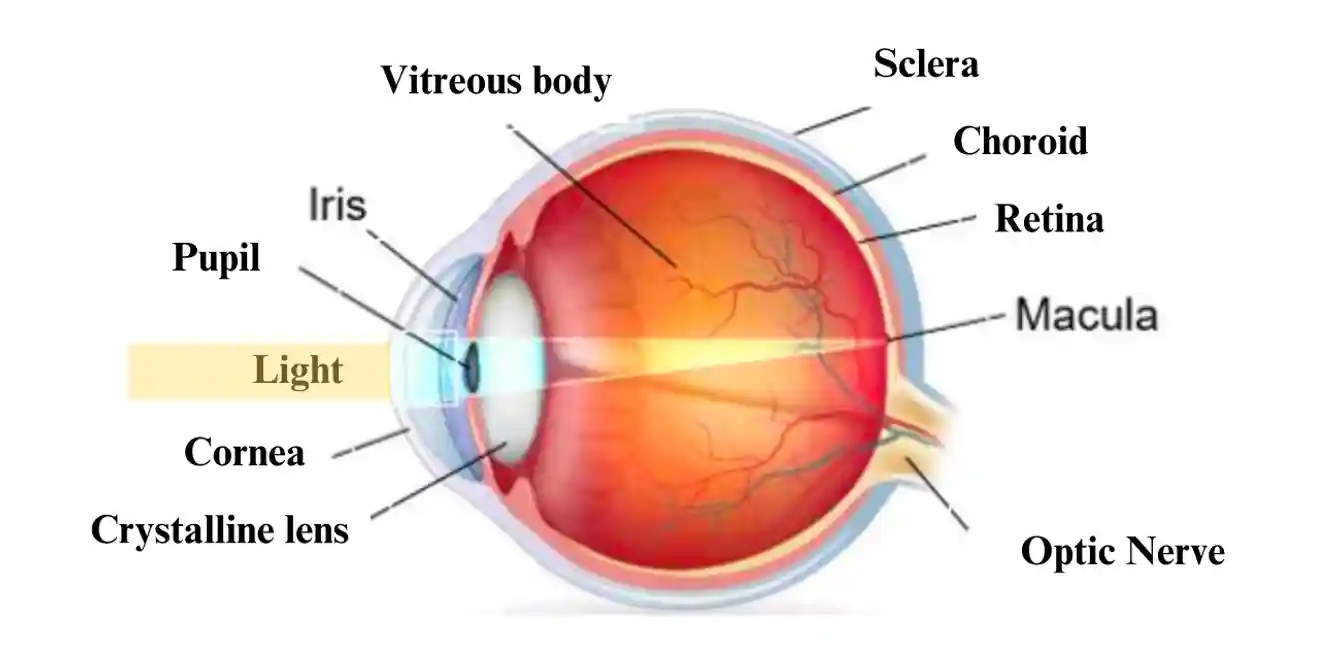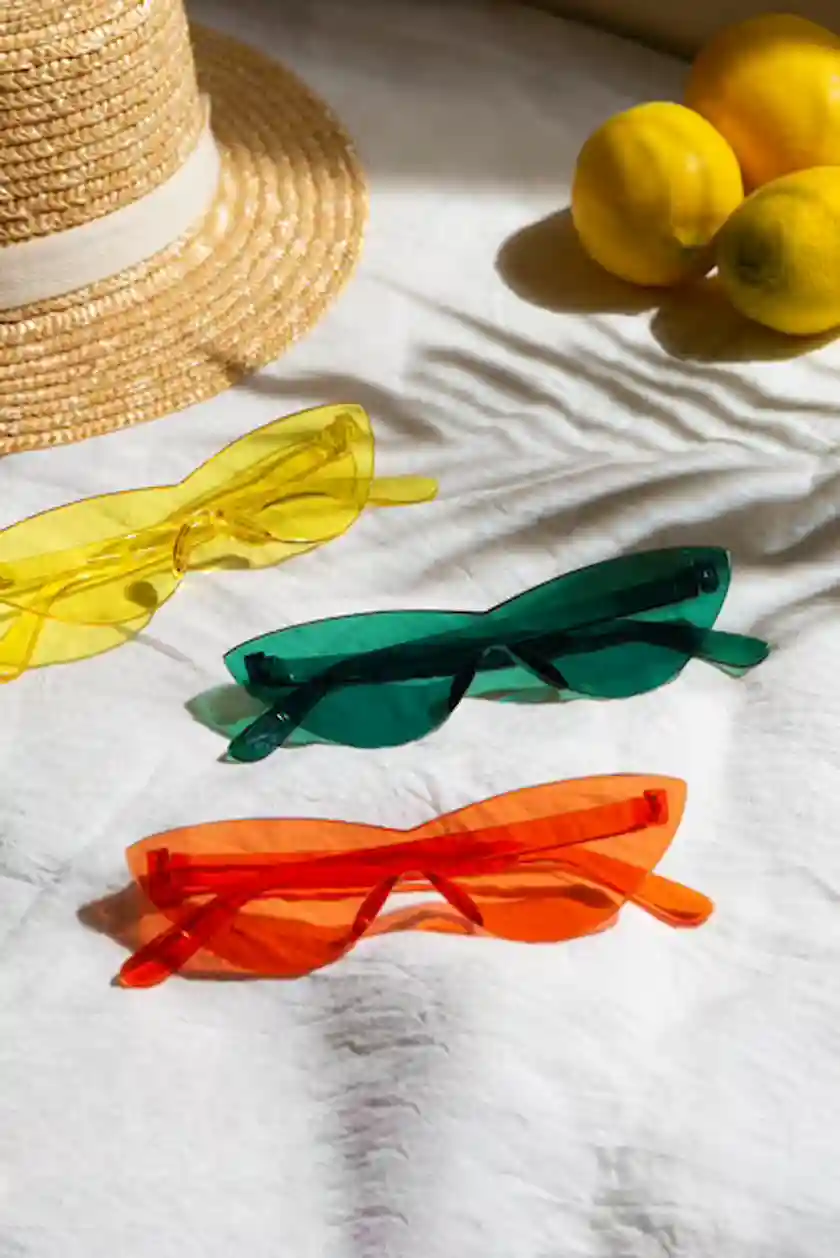Ultraviolet aggravate age related macular degeneration (AMD)
We all love to enjoy the sun's rays. However, it is important to remember that excessive exposure to the sun and ultraviolet (UV) rays can have a harmful impact on our eyes. The UV rays emitted by the sun can cause invisible but significant damage to our eyes, leading to long-term vision problems. They can aggravate eye diseases such as cataracts and AMD.

What is UV light?
UV light, which falls within the electromagnetic spectrum, cannot be seen by the naked eye due to its extremely short wavelength. Only a fraction of the electromagnetic spectrum is perceivable as visible light.
UV light is categorized into three types based on their wavelength range. UVA spans from 315 to 400 nanometers, UVB ranges from 280 to 315 nanometers, and UVC encompasses wavelengths from 100 to 280 nanometers.
UVA rays have a longer wavelength and can penetrate deep into the eye, causing damage to the retina. UV-B rays have a shorter wavelength and are mainly absorbed by the cornea and lens, leading to problems such as cataracts.

Figure 1. impact of uv rays on our eyes
In fact, prolonged, unprotected exposure to UV rays can have several harmful consequences for our eyes, including:
- The development of cataracts: Cataracts form when the lens of the eye becomes cloudy, leading to blurred vision and increased sensitivity to light.
- AMD : AMD is a degenerative disease that affects the macula, the part of the retina responsible for sharp central vision. Excessive UV exposure can accelerate the progression of AMD.
What is AMD ?
AMD is a degenerative disease that affects the macula, a small area of the retina responsible for central vision and the perception of fine detail. AMD is the leading cause of vision loss in people over 50. It is divided into two main forms: dry AMD, which progresses slowly, and wet AMD, which is more severe and progresses rapidly. Common risk factors for AMD include age, heredity, smoking, exposure to ultraviolet radiation, a diet low in antioxidants and certain cardiovascular problems.

Figure 2. Anatomy of the human eye
We have published another article where you can learn more about AMD and its risk factors.
The Impact of UV Radiation on AMD
Excessive exposure to sunlight, particularly the harmful UV-A and UV-B rays, can create harmful substances called reactive oxygen species in our eyes. These substances can cause damage to the cells in the retina, including the macula, which may contribute to the development and worsening of AMD.
In addition, studies have shown that chronic, cumulative exposure to UV radiation throughout a person's life can increase the risk of developing AMD. This emphasizes the importance of protecting our eyes from UV radiation from an early age and maintaining these protective measures throughout our lives.
Protecting Your Eyes from Harmful UV Rays
- Wear UV-Protective Sunglasses: Invest in high-quality sunglasses that provide 100% UV protection. Look for sunglasses labeled with UV400 or those that block both UV-A and UV-B rays. Additionally, choose sunglasses that wrap around the sides of your face to minimize UV exposure from the sides.
- Use Wide-Brimmed Hats: When spending time outdoors, especially during peak sunlight hours, wearing a wide-brimmed hat along with sunglasses provides an extra layer of protection by shielding your eyes and face from direct UV rays.
- Seek Shade: When possible, seek shade or use umbrellas to reduce direct exposure to the sun's UV rays, particularly during the sunniest parts of the day, typically between 10 a.m. and 4 p.m.
- Regular Eye Exams: Schedule regular comprehensive eye exams with your eye care professional. They can detect early signs of AMD and provide guidance on protecting your eyes from UV radiation.

Figure 3. Protecting Your Eyes
Conclusion
While aging and genetics play significant roles in the development of AMD, the impact of ultraviolet (UV) radiation on the eyes should not be overlooked. Protecting your eyes from harmful UV rays by wearing UV-protective sunglasses, using wide-brimmed hats, seeking shade, and scheduling regular eye exams can help reduce the risk of AMD and maintain optimal eye health throughout your life. By taking these preventive measures, you can enjoy the outdoors while safeguarding your vision from the potential hazards of UV radiation.
For more informations about how to act on your lifestyle and have access to tailored recommendation, visit www.macutest.com.
Bibliography
- American Macular Degeneration Foundation, « Ultra-violet and Blue Light Worsen Macular Degeneration - AMDF » , American Macular Degeneration Foundation, 18 mai 2016.
- J. Lucas, « What Is Ultraviolet Light ? » , livescience.com, sept. 2017.
- « Protecting your eyes from the sun’s UV light | National Eye Institute » .
- K. V. Chalam, V. Khetpal, R. Rusovici, et S. Balaiya, « A Review : Role of Ultraviolet Radiation in Age-Related Macular Degeneration » , Eye & Contact Lens-science and Clinical Practice, vol. 37, juill. 2011.
- C. Delcourt et al., « Lifetime Exposure to Ambient Ultraviolet Radiation and the Risk for Cataract Extraction and Age-Related Macular Degeneration : The Alienor Study » , Investigative Ophthalmology & Visual Science, nov. 2014.
- Europe PMC. (s. d.). Europe PMC.
- World Health Organization : WHO. (2022). Ultraviolet radiation.
- Pba Admin, « Protect Your Eyes from the Sun - Prevent Blindness » , Prevent Blindness, mai 2023.
- *The sun, UV light and your eyes*. (2020b, juin 19). American Academy of Ophthalmology.
- Chawda, D., & Shinde, P. (2022). Effects of solar radiation on the eyes. Cureus.
The effects of high blood pressure on the eye
Age-related macular degeneration(AMD) and high blood pressure are two common health problems that often affect the elderly. Although they may seem unrelated at first glance, recent studies have revealed intriguing links between the two conditions.
The link Between Age-related macular degeneration (AMD) and Ethnicity.
Genetics has the power to unlock the mysteries of our physical traits, our predisposition to disease and even our evolutionary history. In fact, AMD is caused by genetic factors and environmental. AMD is a leading cause of vision loss and blindness, particularly among the elderly population. While various factors contribute to the development and progression of AMD, emerging research suggests that ethnicity may also play a role in influencing the risk and characteristics of the disease.